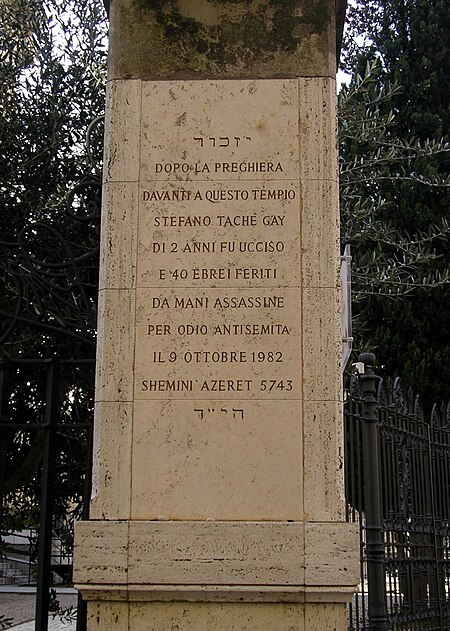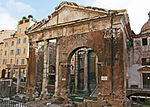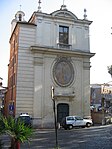Great Synagogue of Rome attack
1980s in Rome1980s murders in Italy1982 crimes in Italy1982 mass shootings1982 mass shootings in Europe ... and 15 more
1982 murders in Europe20th-century attacks on synagogues and Jewish communal organizationsAbu Nidal attacksAttacks on religious buildings and structures in EuropeExplosions in 1982Explosions in ItalyJewish Roman (city) historyMass shootings in ItalyMurder in RomeOctober 1982 crimesOctober 1982 events in EuropePalestinian terrorist incidents in EuropeTerrorist incidents in Europe in 1982Terrorist incidents in Italy in the 1980sTerrorist incidents in Lazio

The Great Synagogue of Rome attack, which was carried out by armed Palestinian terrorists at the entrance to the Great Synagogue of Rome, took place on 9 October 1982 at 11:55 a.m. A 2-year-old toddler, Stefano Gaj Taché, was killed in the attack, while 37 civilians were injured.
Excerpt from the Wikipedia article Great Synagogue of Rome attack (License: CC BY-SA 3.0, Authors, Images).Great Synagogue of Rome attack
Via Catalana, Rome Municipio Roma I
Geographical coordinates (GPS) Address Nearby Places Show on map
Geographical coordinates (GPS)
| Latitude | Longitude |
|---|---|
| N 41.892 ° | E 12.478 ° |
Address
Tempio Maggiore di Roma (Singagoga Nuova)
Via Catalana
00186 Rome, Municipio Roma I
Lazio, Italy
Open on Google Maps










